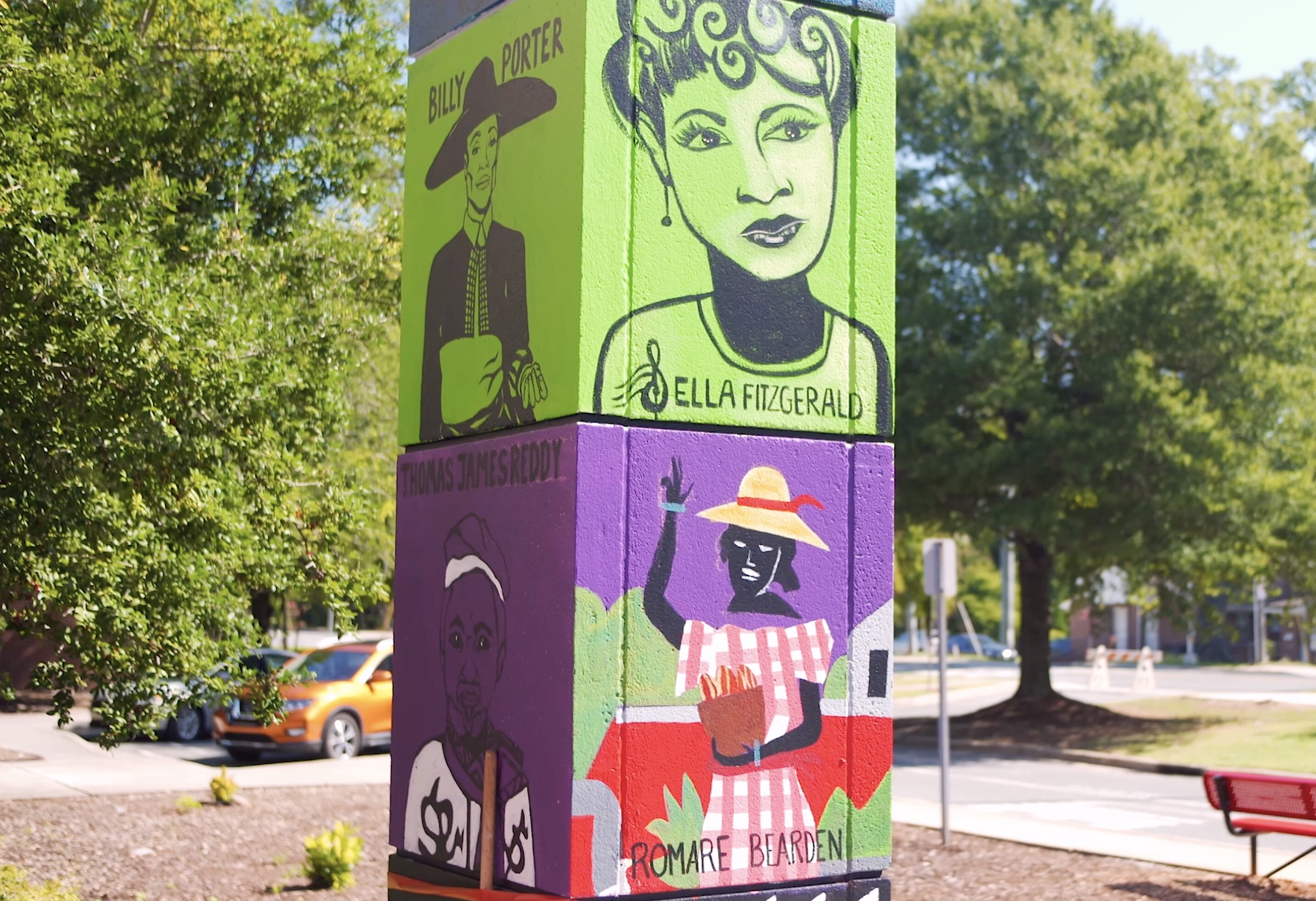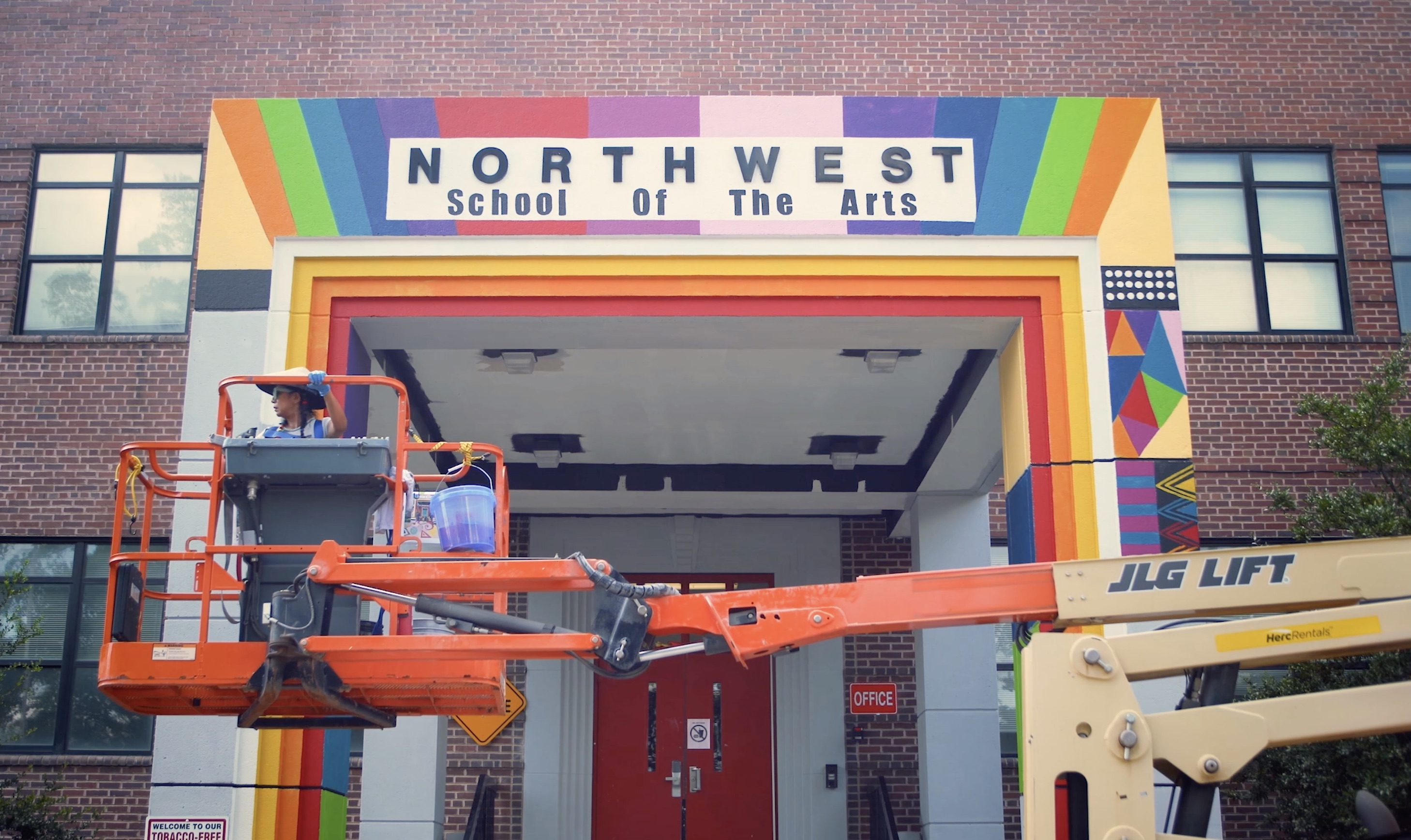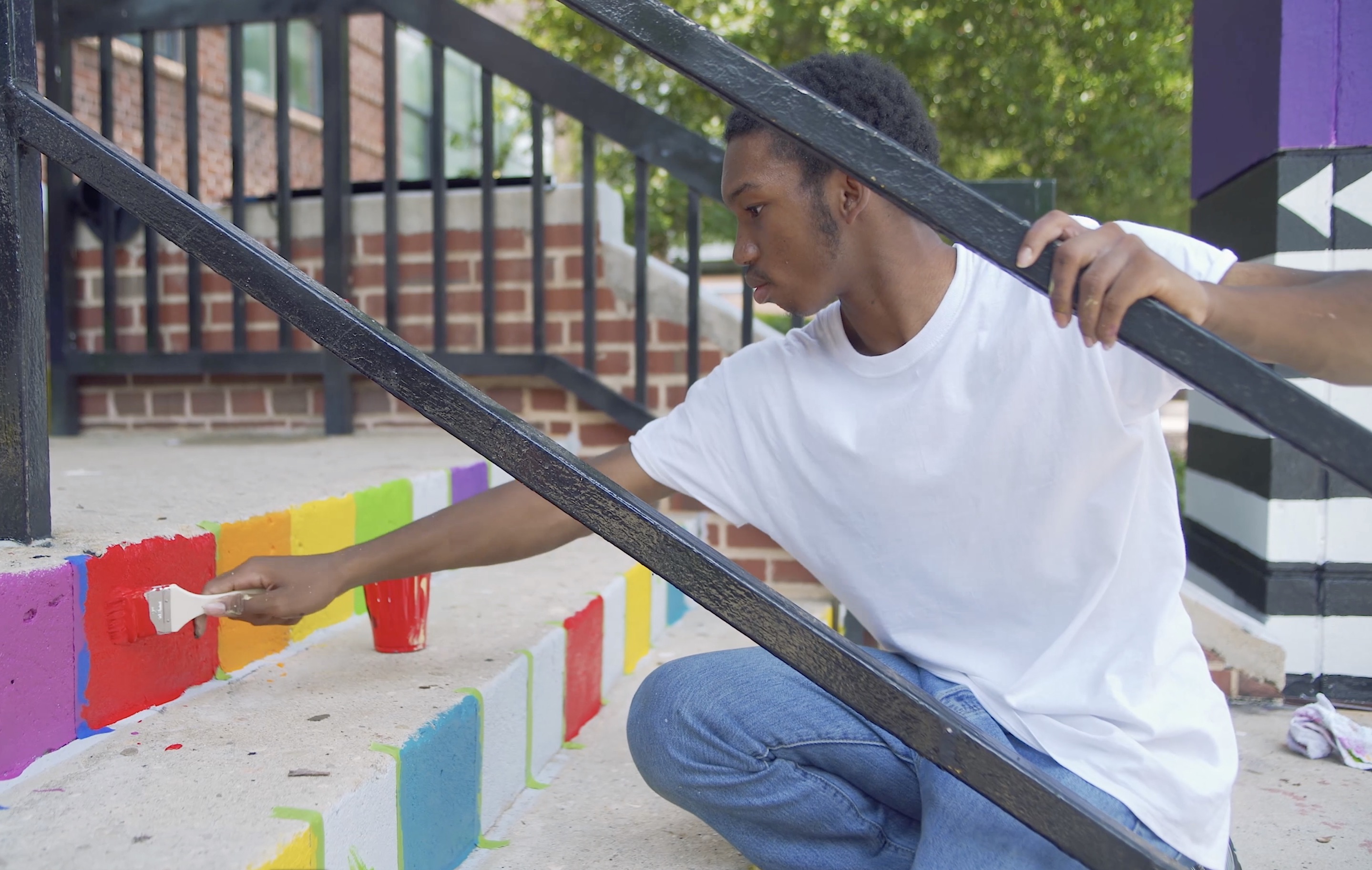November 18, 2019
If you occasionally drive past the Northwest School of the Arts on Beatties Ford Road, you may have noticed a big change there over the summer; a colorful mural has taken over the front entrance facade. As you face the school you are ushered toward the work by African-styled rug designs painted on the ground, which lead you to columns covered with vibrant images of black artists, musicians, and entertainers. Depictions of Aretha Franklin, Ray Charles, Louis Armstrong, Quincy Jones, dancer Misty Copeland, painter Jacob Lawrence, and others exist in a sea of dynamic colors and kinetic movement. It’s a feast for the eyes, and it’s something that seems like it should have existed a long time ago at Northwest.

As principal Melody Sears said, “It doesn’t look like a factory anymore. It was built in the 1930s, and they built them to look like factories because that is all they knew. And school was a factory; often you put a part here and a part there, and the end result was a finished child. We wanted to make it look more like an art school.” The genesis of the idea belongs to Don Nagel, longtime art director at Northwest. He approached Sears last year with the idea, and soon began interviewing artists to see what visions they could bring to the project.

They chose Rosalia Torres-Weiner, who recruited Northwest students to help paint images on the columns in different styles. “I was more of a director on this project, the kids did much of the work,” she said. Originally from Mexico, Torres-Weiner and her husband moved to Charlotte in 1996. She eventually chose to focus her work solely on what she calls “artivism,” which visualizes the struggles of folks like the undocumented immigrant families that have been affected by harassment and deportation. “My work is very colorful,” said Torres-Wiener. “I use a lot of symbols, and my art always tells a story.”

The story of Northwest is also one of struggle, and one that Torres-Weiner identifies with. “The mural tells a story about when this school was segregated. For me it was very important to tell that, because the roots of the Black community are here. We as Latinos have a lot to learn from you, and we experience discrimination as well. I have a lot of respect for what they went through.”
Many of Charlotte’s historic Black communities have been forcibly erased from the landscape by urban renewal policies in the 1970s and the city’s economic expansion during the 1980s and 1990s, but the Historic West End where Northwest sits has survived largely intact. The area is currently being gentrified, however, and that threat will only increase as transit lines barge down Beatties Ford and the pace of development quickens. The building that now houses Northwest was the original West Charlotte High School, built in 1938 on farmland that had been owned by local African American barber and civic leader Thad Tate. The brick school with Art Deco touches became a destination for middle-class black families who were settling around Johnson C. Smith University, and who wanted to provide their children with as much education as Charlotte’s segregated school system could provide.

In 1954 West Charlotte moved further down Beatties Ford into a new and larger building, and after the Supreme Court’s 1971 ruling in the landmark Swann vs. Charlotte-Mecklenburg Board of Education case the school was integrated and became a national symbol of the desegregation movement. In 1999 the desegregation order was rescinded, and by the 2000s the school had become almost exclusively black once again as its performance dipped and teachers left. The original building became Northwest Junior High in the 1950s, and it eventually evolved into the Northwest School of the Arts, a nationally recognized art magnet school that provides specialized instruction in visual arts, drama, music, and dance.

If you look up at the ceiling above the recently painted column, you can see a tribute to those who helped shape the history of the West End. Below a vivid series of designs there is a list of people who have had an impact on these neighborhoods and those who are still fighting for it. They include civil rights pioneers Kelly and Fred Alexander, Reginald Hawkins, Julius Chambers, Charles Jones, Sarah Stevenson, and Dorothy Counts Scoggins, as well former West Charlotte principals Clinton Blake and J.E. Grigsby. The names were provided by West Charlotte alumni Thelma Byers-Bailey, whose Lincoln Heights neighborhood association applied for a grant from the city of Charlotte to help fund the mural.

The best part about the project is that the Northwest students became so involved and were able to learn about the history of their surroundings while practicing their art. “Our kids are working the whole time and asking questions, and they are feeding off of this. They are very serious about what they are doing, because this is part of the path that they will take,” Sears said. So if you’re ever driving down Beatties Ford and you see a brilliant splash of color in front of Northwest, stop in and give it a closer look. You could be dazzled not only by the art itself, but by the story it tells.
Watch the short documentary on the Northwest School of the Arts mural shot and edited by Brandon Torres for the Lincoln Heights Neighborhood Association.
Read next:

 By
By 


